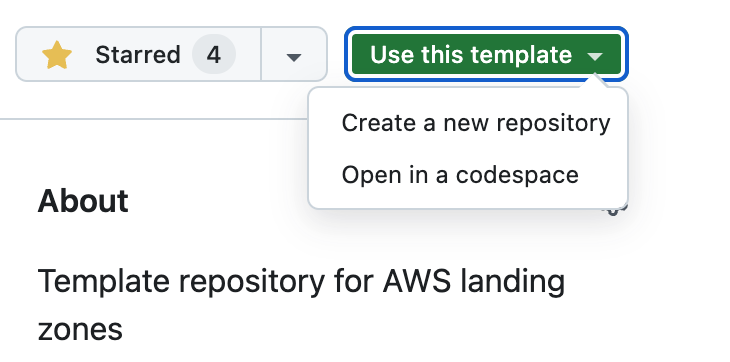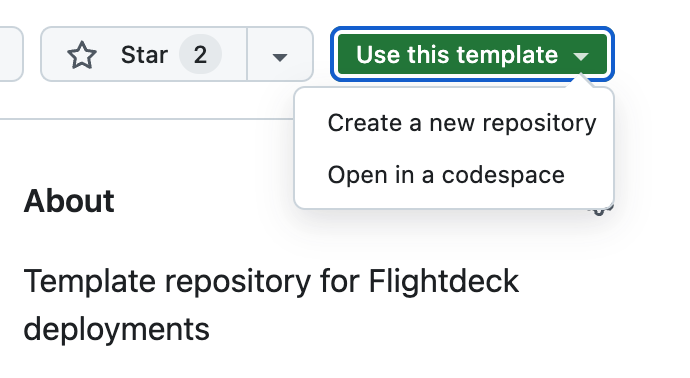AWS Platform Guide
Repository conventions
thoughtbot creates some standard Git repositories for AWS organizations.
Landing Zone Repository
The landing zone repository contains foundational Cloudformation templates and service control policies deployed as a customized package for Customizations for Control Tower. We typically name this repository “organization-landing-zone.”
landing-zone/
manifest.yaml
policies/
templates/You can create this repository using the aws-landing-zone-template, by selecting it in the Repository template dropdown during repo creation.
GitHub docs for Creating a repository from a template.

Infrastructure Repository
The infrastructure repository contains Terraform modules for managing cloud resources and Kubernetes Helm charts required for the platform. We name this repository “organization infra.”
infra/
cd/
ci/
cicd-common/
cluster/
hosted-zones/
network/
operations-platform/
workload-platform/You can create this repository using the flightdeck-template, by selecting it in the “Repository template” dropdown during repo creation in GitHub.
GitHub docs for Creating a repository from a template.

Application Repository
Source code for applications should also be managed in Git. We recommend that each application contain a Dockerfile for building Docker images and a deploy folder to hold Helm Charts’ files.
Dockerfile
deploy/
production/
values.yaml
staging/
values.yaml
values.yamlYou can quickly create new applications using Suspenders.
Terraform Conventions
We use Terraform to maintain infrastructure as code.
State Backends
On AWS, we use the S3 backend for Terraform state. We create a separate backend bucket for each AWS account. Terraform state should be encrypted using unique, customer-managed KMS keys. The key for each module’s state should reflect that module’s path within the infrastructure repository.
You can use the Terraform state backend Cloudformation template to create a secure Terraform state backend for each AWS account. When using Control Tower, you can use Customizations for Control Tower to create a Terraform state backend as part of the baseline for each account.
The landing zone template repository comes with configuration for Terraform state backends.
Filenames
backend.tf |
Configuration for the state backend |
main.tf |
Resources, data sources, modules, and locals |
outputs.tf |
Outputs |
providers.tf |
Configuration for Terraform providers |
variables.tf |
Variables |
versions.tf |
Required Terraform and provider versions |
Formatting
All files should be formatted using terraform fmt.
AWS Platform Guide
The guide for building and maintaining production-grade Kubernetes clusters with built-in support for SRE best practices.
Source available on GitHub.